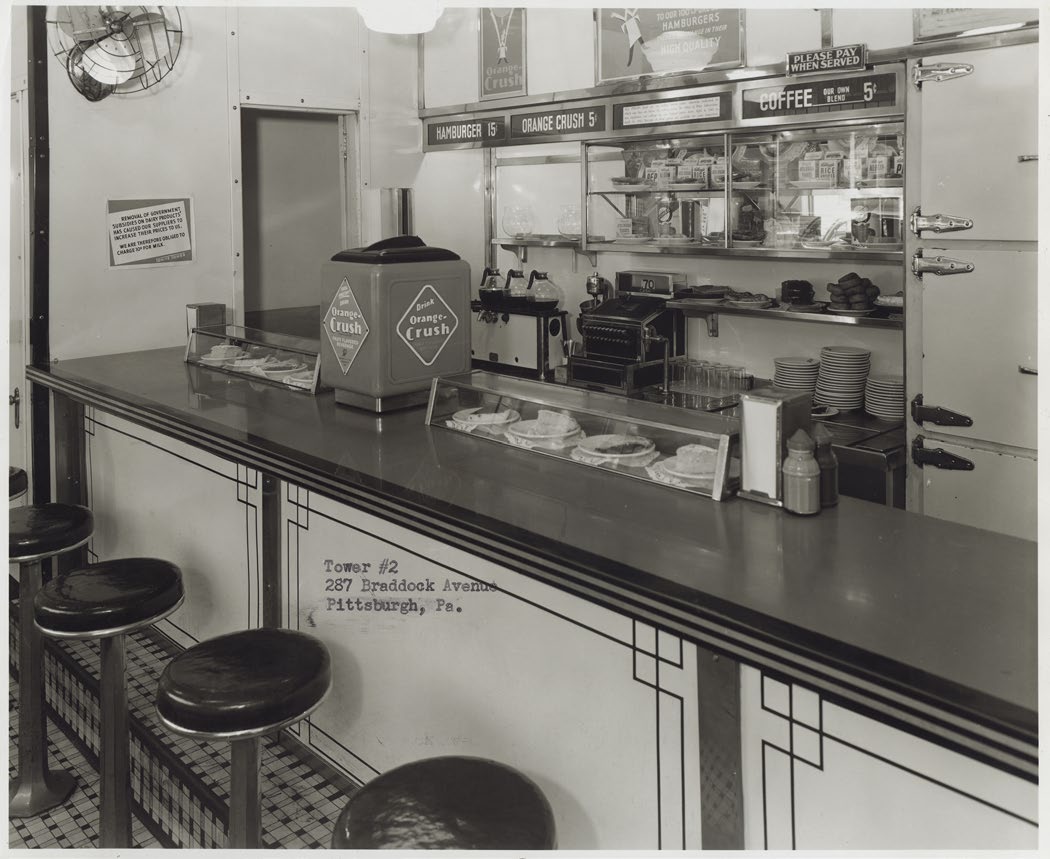White Tower
Takes on
Pittsburgh
By Brian Butko
White Tower
Takes on
Pittsburgh
By Brian Butko
White Tower
Takes on
Pittsburgh
By Brian Butko

Growing up in Pittsburgh in the 1970s and early ’80s, I got to eat at some of the local White Tower restaurants that remained in business. One early morning my dad took us to one near the Greyhound station — later infamous for removing its counter seats each night to discourage “undesirables.” [1]
I could walk to one from college and another from my job at the historical society. At its peak in the 1950s, White Tower had 230 locations in a handful of mostly Midwestern states.2 But like diners and drive-in theaters, White Towers were soon in a steep decline. Despite having more than a dozen locations around Pittsburgh — and company headquarters here briefly too — virtually no trace remains of White Tower in the city.
The easiest way to explain White Tower to anyone unfamiliar is that it was akin to White Castle, a similar old chain that still has 420 restaurants and frozen “slider” burgers in groceries. White Castle and White Tower are in fact inexorably intertwined, having been locked in lengthy lawsuits over who pioneered the concept of selling square-shaped burgers in tiny white buildings. White Tower — founded in 1926, five years after White Castle — lost the case but negotiated to keep its name and locations … for a fee. White Tower Management Corporation (its official name) also had to alter its architecture and prove it with photos of each location. The images piled up over the decades until 1979 when architects Paul Hirshorn and Steven Izenour published a selection of them in a 200-page book, White Towers.



White Tower #1, 110 Atwood St., Pittsburgh; #2, Braddock Ave, Turtle Creek; #3, Larimer Ave, East Liberty
A few years ago, I borrowed and scanned the Pittsburgh images from the surviving company, headed by T. Brock Saxe, son and grandson of the two founders of White Tower. The entire collection — more than 3,000 photos and drawings — has since been donated by the Saxe family to the University of Pennsylvania’s Architectural Archives.3 Not every location was represented in what I got, and not every one is shown here, but a few before/afters from the 1930s show how White Tower was forced to change, while images from the 1960s show the company changing to survive.

White Tower #2, Braddock Ave, Turtle Creek (Interior)
About the Author: Brian Butko is the author of books on the Lincoln Highway, roadside attractions, diners, and Isaly’s Dairy. His next three books will explore early amusement parks. He has designed the SCA Journal since 1995.
Thanks to Maria Renzelli and Kyle Weaver for proofreading.
There’s more! To read the rest of this article, members are invited to log in. Not a member? We invite you to join. This article originally appeared in the SCA Journal, Fall 2015, Vol. 33, No. 2. The SCA Journal is a semi-annual publication and a member benefit of the Society for Commercial Archeology.
More Articles Join the SCA


